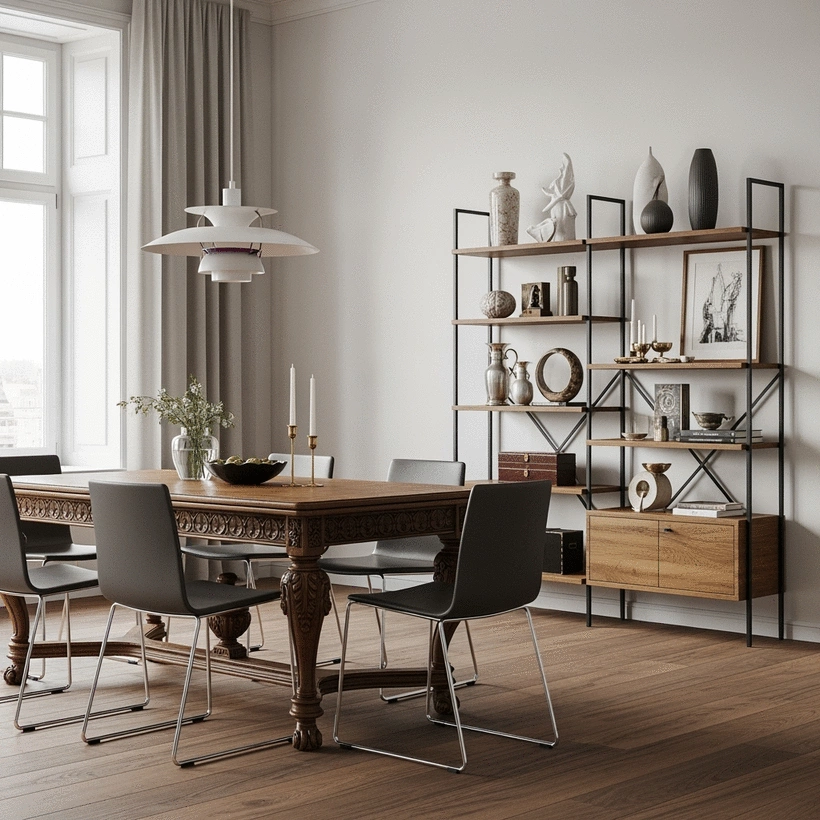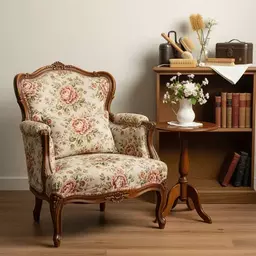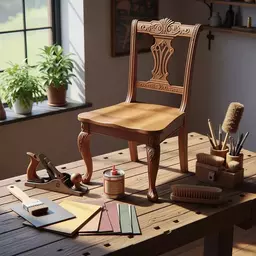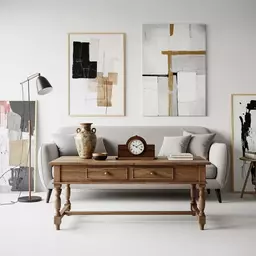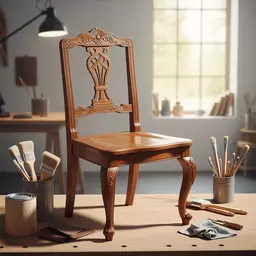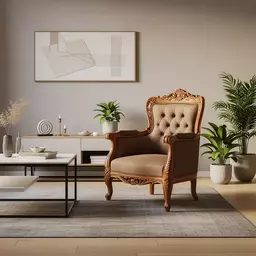Vintage Furniture Restoration Tips
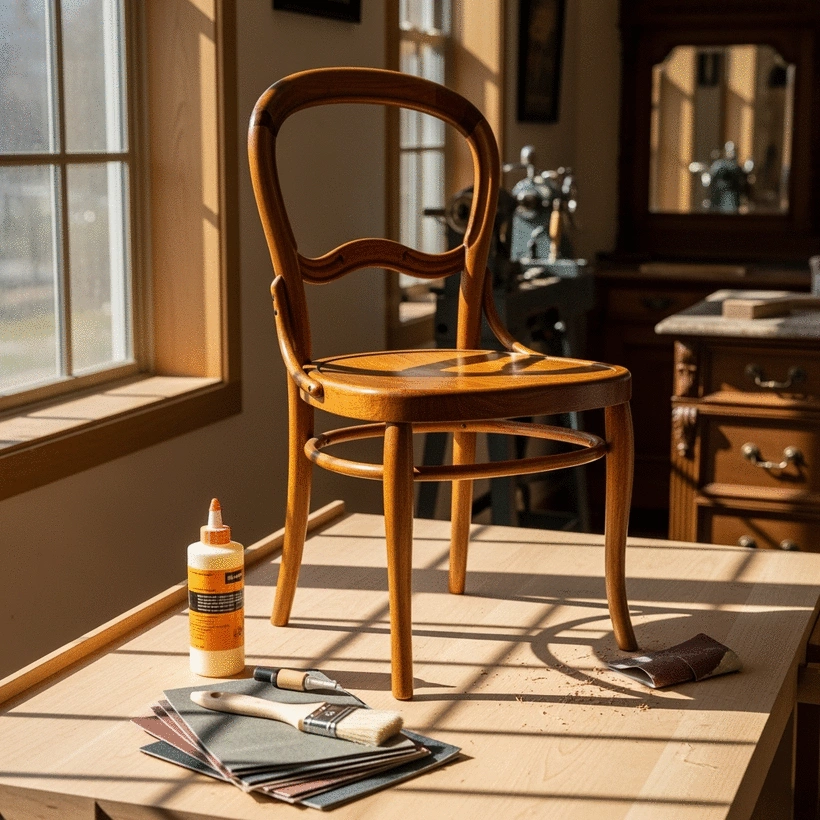
Embarking on the journey of vintage furniture restoration can feel like uncovering hidden treasures. Each piece tells its own story, and understanding its history is key to appreciating its true value. Are you ready to breathe new life into your antique finds?
What You Will Learn
- Assess the condition of antique furniture to determine necessary restoration efforts.
- Identify materials and original finishes to choose appropriate cleaning and restoration techniques.
- Utilize gentle cleaning solutions, like vinegar and soap, to maintain the integrity of the furniture.
- Apply finishing wax to enhance aesthetics and protect vintage pieces from wear and tear.
- Employ wood fillers effectively for repairing scratches and structural damage.
- Engage with the vintage furniture community to exchange tips and experiences for better restoration practices.
- Explore various resources, including books and online tutorials, to deepen your knowledge of furniture restoration.
Key Strategies for Vintage Furniture Restoration
This visual highlights essential steps for successfully restoring vintage furniture, focusing on assessment, cleaning, and finishing techniques. For a deeper dive into the necessary tools for restoring antique furniture, check out our detailed guide.
Assess the Condition
- Check for structural integrity
- Examine the finish
- Identify any repairs
- Research similar pieces
Gentle Cleaning Techniques
- Use mild dish soap with warm water
- Mix equal parts vinegar and water
- A few drops of olive oil for nourishment
Step-by-Step Cleaning
- Dust with a soft, dry cloth
- Apply cleaner with a soft cloth
- Dry immediately with a clean cloth
- Condition wood afterwards
Finishing Techniques
- Apply finishing wax for shine
- Use wood fillers for damages
- Choose colors that enhance aesthetics
Essential Preparation for Vintage Furniture Restoration
Getting ready to restore vintage furniture is like embarking on a treasure hunt! With each piece you encounter, there's a story waiting to be unveiled. I’ve learned that understanding your vintage furniture is the first step in this exciting journey. When you know what you’re working with, you can appreciate its true value and determine the best approach for restoration.
Understanding Your Vintage Furniture
Before diving into restoration, it's crucial to assess the condition and value of your antique pieces. Start by examining the furniture closely. Look for signs of past repairs, wear, and any structural issues. This not only gives you an idea of how much work is needed but also helps you evaluate its historical significance.
Additionally, taking notes about the piece's current state and any visible markings can be incredibly helpful. You may find that what seems like a simple scratch could be a clue to its age or maker! Have you ever found a hidden marking that made you appreciate a piece even more? For more on preserving the look of your pieces, consider learning about maintaining antique wood finishes.
Assessing Condition and Value of Antique Pieces
To assess condition effectively, consider the following:
- Check for structural integrity: Are there any wobbly legs or loose joints?
- Examine the finish: Is the surface scratched, chipped, or fading?
- Identify any repairs: Look for signs of previous restoration attempts.
- Research similar pieces: Understanding market value can help you gauge worth.
By considering these factors, you can more accurately determine whether a restoration is worth the investment!
Identifying Materials and Original Finishes
Identifying the materials and original finishes is essential too. Antique furniture can be made from various woods like oak, mahogany, or walnut, each with its unique characteristics. Understanding these materials helps in choosing the right restoration techniques. For example, you wouldn’t want to use a harsh cleaner on a delicate mahogany surface!
Another aspect is recognizing the original finish, which may consist of varnish, shellac, or oil. This knowledge will guide you in selecting appropriate cleaning and refinishing methods. If you're ever unsure, I recommend consulting resources or reaching out to vintage furniture communities for guidance.
Cleaning Techniques for Antique Furniture
Cleaning antique furniture is an essential step that sets the stage for successful restoration. It’s vital to use the right techniques to minimize damage while effectively removing dirt and grime. I often use gentle soaps and vinegar mixtures, which are perfect for maintaining the integrity of the piece.
It’s like giving your vintage treasures a refreshing bath without stripping away their charm! So, what should you keep in mind when cleaning? You can also explore restoring antique furniture safely for additional insights.
Choosing the Right Cleaning Solutions: Gentle Soaps and Vinegar Mixtures
When it comes to cleaning solutions, here are my go-to options:
- Gentle soap solution: Mix mild dish soap with warm water for general cleaning.
- Vinegar mixture: Combine equal parts of vinegar and water for natural cleaning power.
- Olive oil: A few drops can help clean and nourish wooden surfaces.
Remember, always test cleaning solutions on a small, inconspicuous area first to ensure they won’t harm your piece!
Step-by-Step Guide to Cleaning Antique Wood Furniture
Here’s a simple step-by-step guide to cleaning antique wood furniture:
- Dust: Use a soft, dry cloth to remove any surface dust.
- Apply cleaner: Dip a soft cloth into your chosen solution and gently wipe the surface.
- Dry: Immediately follow with a dry cloth to prevent moisture from soaking into the wood.
- Condition: After cleaning, consider using a wood conditioner to nourish the wood.
Taking care in this cleaning process will help keep your antique furniture looking beautiful for years to come. What antique piece are you excited to clean and restore?
Pro Tip
Did you know? Before starting your restoration process, take high
Summarizing Key Restoration Strategies
As we wrap up our exploration of vintage furniture restoration, it's crucial to remember the core strategies that can make your restoration journey a success. Whether you're a seasoned collector or just dipping your toes into the world of antique furniture, these tips will guide you in preserving the beauty and integrity of your cherished pieces. Let's revisit some essential strategies that every antique enthusiast should keep in mind!
First and foremost, prioritize understanding your vintage furniture. Assessing the condition and identifying materials are key to planning your restoration effectively. From there, gentle cleaning methods set the stage for your project, allowing the natural beauty of each piece to shine. Don't forget the importance of waxing and finishing; these techniques not only enhance aesthetics but also protect your furniture from wear and tear. Here’s a quick recap:
- Assess the condition of your furniture to determine what needs attention.
- Use gentle cleaning techniques to preserve original finishes.
- Apply finishing wax for added shine and protection.
- Repair damages using wood fillers and proper techniques.
Recap of Essential Tips for Vintage Furniture Enthusiasts
For those of us who cherish vintage furniture, applying the right cleaning, repairing, and finishing techniques is vital. With my experience at the Antique Furniture Guide, I've learned that sharing knowledge and techniques not only enhances personal collections but also builds a community of passionate restorers. Let's revisit some of the highlights that will keep your vintage treasures looking their best!
Cleaning methods, like using vinegar mixtures or gentle soaps, are great for maintaining original finishes. While repairing, remember that small fixes can make a big difference, especially when stabilizing wobbling legs or refreshing upholstery. Finally, finishing techniques such as applying colored wax can bring out the unique character of each piece. Here’s a summary of key techniques:
- Gentle soaps and vinegar mixtures are ideal for cleaning.
- Wood fillers can effectively fix scratches and damage.
- Colorful finishes enhance the aesthetic appeal of your furniture.
Encouraging Engagement and Further Learning
Restoration is not just a task; it's a journey filled with stories, creativity, and community! I invite you to share your own restoration stories and insights. Have you encountered any challenges in your projects? Or perhaps you’ve found a technique that worked wonders for you? Your experiences can inspire others, and together we can foster a rich dialogue around the art of restoration. Let's keep this conversation going!
At Antique Furniture Guide, I believe that every restorer has something unique to contribute. Engaging with others in the vintage restoration community can provide fresh ideas, support, and motivation. So, don’t hesitate to comment and ask questions about your restoration efforts. Here are some ways to connect:
- Share your restoration journey in the comments below.
- Ask questions about specific restoration techniques.
- Exchange tips with fellow enthusiasts.
Resources for Further Exploration
For those eager to dive deeper into vintage furniture restoration, I've curated a selection of valuable resources. Whether you're looking for in-depth books or engaging online tutorials, there are a plethora of options available. These resources can help expand your skills, making you more confident in your restoration projects.
Consider exploring these recommendations for your next steps:
- Books: Look for titles focused on furniture restoration techniques and history.
- Online Tutorials: Websites and video platforms offer step-by-step guides for various restoration methods.
- Visual Guides: Infographics can provide quick references for techniques and materials.
By tapping into these resources, you can enhance your skills and grow your appreciation for the artistry behind antique furniture. Happy restoring! Don't forget to consider enhancing antique furniture with color for a fresh look.
Recap of Key Points
Here is a quick recap of the important points discussed in the article:
- Understand Your Vintage Furniture: Assess the condition and historical significance before starting any restoration.
- Evaluate Condition: Check for structural integrity, finish wear, and previous repairs to determine restoration needs.
- Identify Materials and Finishes: Recognizing the type of wood and original finish helps in choosing appropriate restoration techniques.
- Use Gentle Cleaning Techniques: Opt for mild soaps and vinegar mixtures to clean without damaging the original finish.
- Follow a Cleaning Process: Dust, apply cleaner, dry immediately, and condition to maintain the beauty of your furniture.
- Repair and Finish: Utilize wood fillers for repairs and apply finishing wax for added shine and protection.



